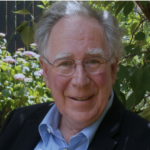Its mid-summer in Rome and last week there was a heat wave with a top temperature of 38° Celsius. Hot days in Rome are stifling, with the heat compounded by the over-whelming influx of tourists.
Like most Italian institutions, the Vatican normally closes down in summer, with previous popes retiring to Castel Gandolfo on Lake Albano in the cooler Alban Hills. But not Pope Francis, a man with a mission and who just keeps pressing-on.
Last Sunday, July 9, Francis announced the appointment of 21 new cardinals, 18 of whom will become cardinal electors after he dies or retires. They will be officially installed on September 30, 2023 bringing the number of cardinal electors to 137. This means that Francis has now appointed 97 of the men who will elect his successor and, given that most of them generally share his vision of Catholicism, the hope is that the next pope will continue the journey Francis has begun.
Before examining that journey, we should say that he has continued the appointment of bishops from all over the world as cardinals. The present batch include men from places as diverse as Colombia, South Sudan, Malaysia, Hong Kong, South Africa, Jerusalem, Tanzania, and Argentina.
If a papal election were held after September 2023, the 137 electors would include 53 from Europe, 24 Asians, 19 Africans, 17 North Americans, 16 South Americans, 5 Central Americans and 3 from Oceania. There are no Australians. The three electors from our region are Cardinals John Dew (Wellington, New Zealand), John Ribat (Port Moresby, PNG) and Soane Mafi (Tonga). There is also a cardinal in Dili, East Timor.
Internationalisation and appointments from places that have never been represented at the top of the church hierarchy has been a high priority for Francis. As a result, he has simply bypassed many dioceses that take themselves rather seriously as deserving of a cardinal archbishop, places like Venice, Milan, Philadelphia, Los Angeles – and Sydney.
Typical of Francis’ cardinal appointments is the archbishop of Juba, South Sudan, Stephen Martin Mulla. There was strong opposition in Juba to his appointment as archbishop in 2019, fundamentally because he was not a member of the local ethnic group, the Bari. After a Vatican investigation, his appointment went ahead, but opposition continued. Tribalism is a continuing problem in South Sudan with 64 different tribes and 400,000 people already dead in community conflict, despite peace talks recently negotiated by the very effective Rome-based, lay Catholic Sant’Egidio Community.
So, what is this journey that Francis has begun? It’s summed up by an ugly neologism, ‘synodality’, from the word ‘synod’ meaning assembly, usually of clerics. Francis has called an Extraordinary World Synod to meet in Rome in October 2023 and 2024. But it won’t be just made-up of bishops and male clerics.
Sure, there’ll be 189 representatives elected by national bishops’ conferences and the Eastern Catholic churches. The elected Australians are Archbishop Pat O’Regan (Adelaide) and Bishop Shane McKinlay (Sandhurst i.e. Bendigo). There’ll also be a bevy of ex officio clerics, mainly from the Vatican bureaucracy. The key people organising the synod are the Maltese Cardinal Mario Grech and French Sister Nathalie Becquart, who recently visited Australia and the Pacific.
But the big change is that of the 364 voting members, 120 have been appointed by the pope personally and of these 54 are women, about half laywomen and half religious sisters. There’s also been an emphasis on young appointees. And of the ten synod presidents (chairpersons) two are women, one each from Mexican and Japan. (Perth Archbishop Timothy Costelloe has also been appointed a president). Significantly, 26.4% voting members are not bishops, a revolutionary change for a male-dominated, clerical institution. US-based women’s ordination advocate, Kate McElwee said the move was “a significant crack in the stained-glass ceiling.”
But Francis has been wise. He hasn’t loaded the synod with people who agree with him. Sure, there will be a sizeable minority among the elected bishops who are not fans of the pope’s agenda, especially among the US bishops. But he’s made sure to invite some of his most open and active opponents, like the German cardinal, Gerhard Müller.
As experienced Vatican observer, Robert Mickens, pointed out in La Croix (July 8, 2023) Francis is involved in “a high-wire act” that shows that “he’s well aware that Catholics of all points of view must be part of the synod’s process, his audacious project to reform and re-energise the church.”
For the many other women and men in Australia and worldwide, including myself, who’ve been involved in the renewal process for the last 50 years of hard labour, especially during the papacy of the John Paul II (1978-2005), Francis has provided a glimmer of hope, a sense that the ideals of a church open to society and culture espoused by the Second Vatican Council (1962-1965) have not been lost and that we still have a chance of realising them.
Paul Collins is an historian, broadcaster and writer. A Catholic priest for thirty-three years, he resigned from the active ministry in 2001 following a dispute with the Vatican over his book Papal Power (Harper Collins (1997)). He is the author of seventeen books, the most recent being The Depopulation Imperative (Australian Scholarly (2021)) and Recovering the ‘True Church’ (Coventry (2022)). A former head of the religion and ethics department in the ABC, he is well known as a public commentator on Catholicism and the papacy and also has a strong interest in ethics, environmental and population issues.

